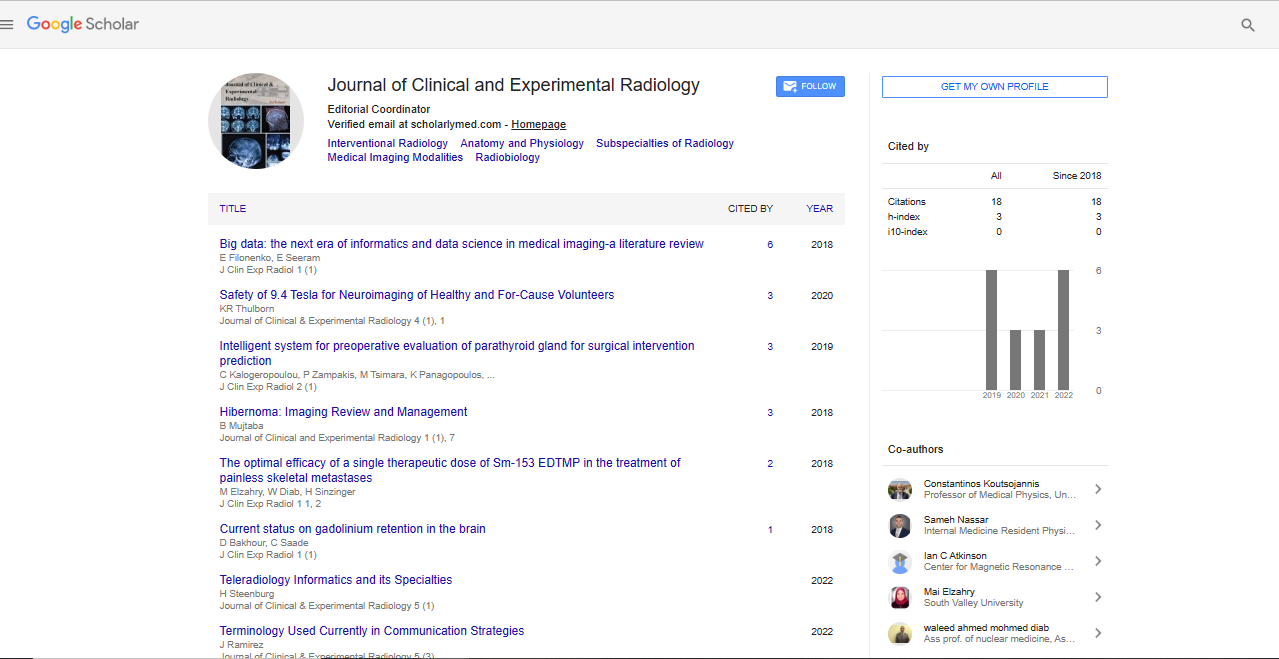Short Communication, J Clin Exp Radiol Vol: 4 Issue: 4
Hsa_circ_001783 regulates breast cancer progression via sponging miR-200c
Chang Gong
Sun Yat-sen University, Guangzhou, China
Abstract
Increasing evidence suggests circRNAs exert vital functions in tumor progression via sponging miRNAs. However, the role of circular RNAs in breast cancer remains mostly unclear. Here we reported the molecular mechanisms of a novel circRNA, hsa_circ_001783 in regulating breast cancer progression and its ability in predicting clinical outcomes by integrating high throughput computation, experimental technologies in vitro and clinical investigation. Our computational pipeline identified hsa_circ_001783 as the one with highest score out of 594 breast cancer-associated circRNA candidates. We found the circRNA was enriched in cytoplasm and overexpressed in breast tumor as compared to paired non-cancerous tissue. High expression of hsa_circ_001783 correlated with higher tumor burden (p=0.047) and poor overall survival (p=0.025) in128 patients. Knockdown of hsa_circ_001783 remarkably inhibited the proliferation and invasion of MDA-MB-231 and MDA-MB-468 cells.
Keywords: Radiology
Introduction
Increasing evidence suggests circRNAs exert vital functions in tumor progression via sponging miRNAs. However, the role of circular RNAs in breast cancer remains mostly unclear. Here we reported the molecular mechanisms of a novel circRNA, hsa_circ_001783 in regulating breast cancer progression and its ability in predicting clinical outcomes by integrating high throughput computation, experimental technologies in vitro and clinical investigation. Our computational pipeline identified hsa_circ_001783 as the one with highest score out of 594 breast cancer-associated circRNA candidates. We found the circRNA was enriched in cytoplasm and overexpressed in breast tumor as compared to paired non-cancerous tissue. High expression of hsa_circ_001783 correlated with higher tumor burden (p=0.047) and poor overall survival (p=0.025) in128 patients. Knockdown of hsa_circ_001783 remarkably inhibited the proliferation and invasion of MDA-MB-231 and MDA-MB-468 cells. We found hsa_ circ_001783 increased significantly by 1.5-2 folds while 7 miRNAs, predicted targets of hsa_circ_001783, were remarkably reduced (fold change>1.5) in mRNA expression levels in BT549, MDA-MB-468 and MDA-MB-231 as compared with MCF-7 breast cancer cell lines. Among all the targets, miR-200c was the one in the strongest correlation with hsa_circ_001783 in expression levels. Knockdown of hsa_circ_00178 in MDA-MB-231 breast cancer cells suppressed expression of miR-200c-targeted genes ZEB1, ZEB2 and CCNA2. The expression level of hsa_circ_001783in human breast cancer tissues negatively correlated with expression of miR-200c (p=0.0286), but positively correlated with that of ZEB1 (p=0.002), ZEB2 (p=0.0001) and CCNA2 (p=0.005).In a conclusion, hsa_circ_001783 regulates breast cancer progression via sponging miR-200c. The circRNA may serve as a novel predictor of ¬¬clinical outcomes for breast cancer.
 Spanish
Spanish  Chinese
Chinese  Russian
Russian  German
German  French
French  Japanese
Japanese  Portuguese
Portuguese  Hindi
Hindi 